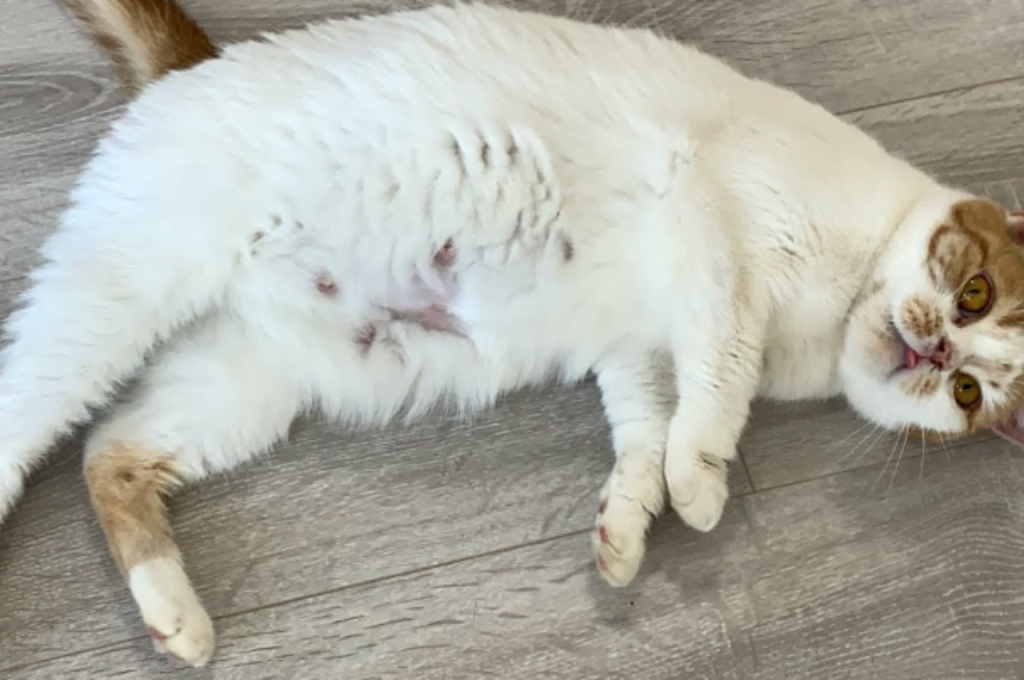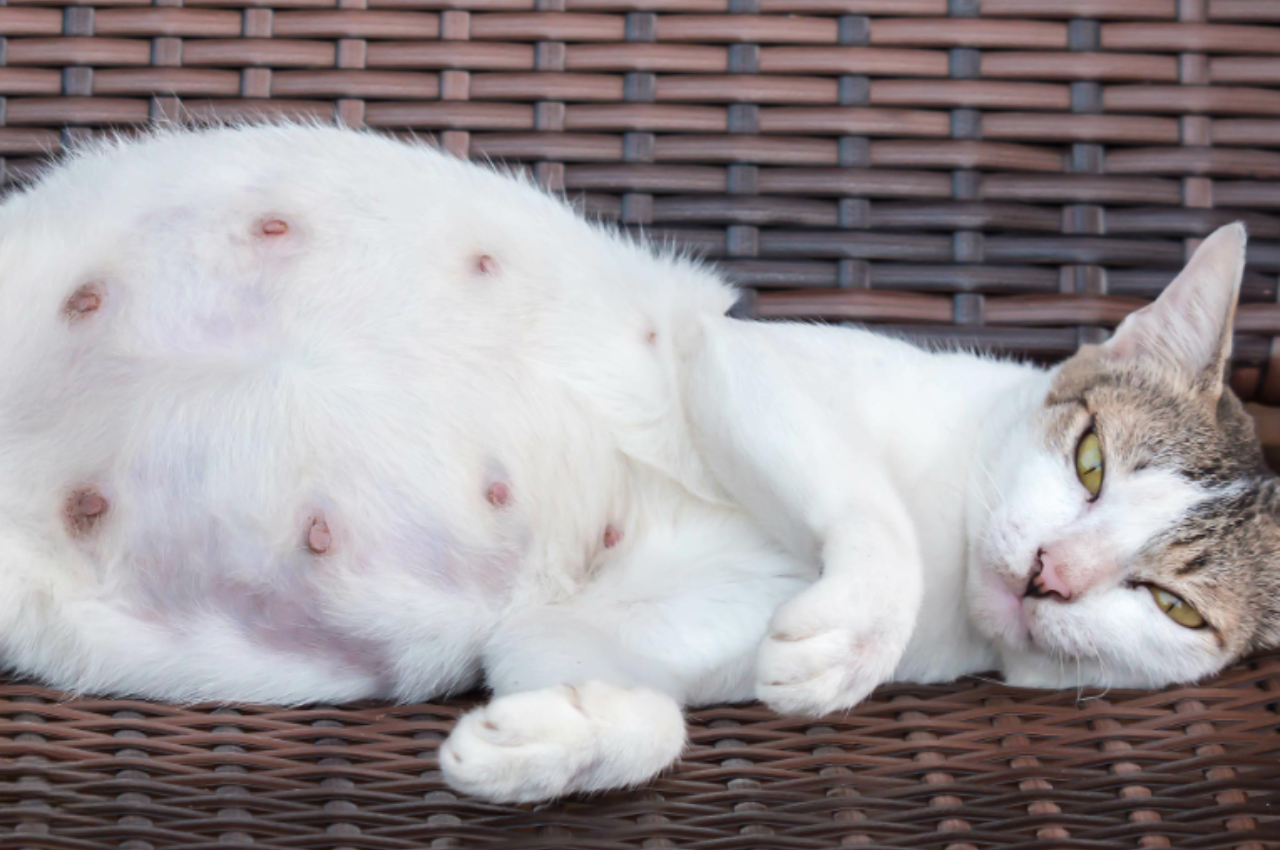To know if your cat is close to giving birth, watch for nesting behavior and decreased appetite. Look for milk production and restlessness as signs of impending labor.
Pay attention to your cat’s behavior and physical changes as the due date approaches. Additionally, consult with your veterinarian for guidance and support during this critical time. It’s essential to create a comfortable and quiet space for your cat to give birth and raise her kittens. By being observant and prepared, you can ensure a smooth and successful delivery for your feline companion.
Introduction to Feline Pregnancy
A cat’s pregnancy, also known as gestation, is a crucial period that requires careful attention and monitoring. Understanding the signs and duration of feline pregnancy is essential for ensuring the well-being of both the mother and her offspring.

The Duration of Cat Pregnancy
On average, cat pregnancy typically lasts between 63 and 65 days. However, the exact duration can vary depending on factors such as breed and the number of kittens the cat is carrying.
Initial Signs of Pregnancy in Cats
Early indications of pregnancy in cats may include behavioral changes, such as increased affection or seeking seclusion, as well as physical alterations like swollen nipples and a slightly rounded abdomen.
Physical Changes in Your Cat
As your cat nears the end of her pregnancy, you may notice some physical changes. Her nipples may become enlarged and pink, and she may start to show nesting behaviors. Keep a close eye on her and contact your vet if you have any concerns.
Nesting Behavior
One of the telltale signs that your cat is close to giving birth is her nesting behavior. As the due date approaches, you may notice that your cat becomes more restless and starts searching for a safe and comfortable place to give birth to her kittens. This behavior is instinctual and is often characterized by your cat exploring different corners of your home, looking for the perfect spot to create a nest.
Enlarged Nipples and Color Changes
Another physical change you may observe in your pregnant cat is the enlargement of her nipples. As her body prepares for nursing the kittens, her nipples will become larger and more prominent. You may also notice that the color of her nipples changes to a darker shade. This is due to the increased blood flow to the area in preparation for lactation.
It’s important to note that not all cats will display the same physical changes before giving birth. Some cats may exhibit these signs more prominently, while others may not show any noticeable changes until right before labor. Each cat is unique, and their individual experiences may vary.
However, if you notice these physical changes in your cat along with other signs such as restlessness, increased vocalization, loss of appetite, or a drop in body temperature, it’s a good indication that she is close to giving birth. Monitoring these changes closely can help you prepare for the arrival of the kittens and provide the necessary support and care for your cat during this exciting time.
Behavioral Changes Before Birth
Behavioral changes in a pregnant cat can provide crucial insights into the imminent arrival of her kittens. Understanding these changes can help you provide the necessary care and support. Here are some key behavioral indicators that can signal your cat’s approaching labor:
Increased Affection or Seclusion
Pregnant cats may display contradictory behavior as they approach labor. Some cats become more affectionate, seeking extra attention and physical contact. On the other hand, some cats may become more reclusive, seeking solitude in preparation for giving birth.
Vocalization and Restlessness
As a cat nears labor, she may exhibit increased vocalization, restlessness, and pacing. These behaviors can be her way of expressing discomfort or seeking a secluded spot to deliver her kittens. If you notice your cat excessively grooming her genital area or rearranging bedding, labor may be imminent.
Physical Signs of Impending Labor
As a cat owner, it’s essential to know the physical signs that indicate your feline friend is close to giving birth. By being aware of these signs, you can provide the necessary care and support during this crucial time. In this article, we will discuss three common physical signs that indicate impending labor in cats: drop in body temperature, loss of appetite, and nesting behavior.

Drop-In Body Temperature
One of the first signs that your cat is nearing labor is a drop in her body temperature. Normally, a cat’s body temperature ranges between 100-102 degrees Fahrenheit. However, about 24 hours before giving birth, her body temperature may drop to around 98-99 degrees Fahrenheit. This decrease in temperature is a result of hormonal changes in preparation for labor.
Loss of Appetite
Another physical sign of impending labor in cats is a loss of appetite. As the delivery time approaches, your cat may show a decreased interest in food. This is a natural instinct, as her body focuses on the upcoming labor process. It’s essential to monitor her food intake and ensure she stays hydrated during this time. If you notice a significant decrease in appetite or any signs of dehydration, it’s crucial to contact your veterinarian for guidance.
Nesting Behavior
Prior to giving birth, pregnant cats often exhibit nesting behavior. This involves seeking out a quiet and comfortable place to deliver her kittens. Your cat may start rearranging blankets, and towels, or even create a secluded spot in a closet or under furniture. This behavior indicates that she is preparing her birthing area. Providing a designated space with soft bedding and a warm environment can help her feel secure and at ease during labor.
By recognizing these physical signs, you can be better prepared for your cat’s impending labor. Remember to create a calm and quiet environment, monitor her body temperature, ensure she stays hydrated, and provide a suitable nesting area. If you have any concerns or questions, it’s always best to consult with your veterinarian for professional advice.
The Stages of Cat Labor
As your cat nears labor, signs include restlessness, nesting behavior, decreased appetite, and a drop in body temperature. Monitor closely for these cues to prepare for the imminent birth of her kittens.
When it comes to understanding if your cat is close to giving birth, it’s crucial to be aware of the stages of cat labor. By recognizing the signs and behaviors associated with each stage, you can provide the necessary care and support for your pregnant feline friend.
Early Stage Labor Signs
- Nesting behavior may begin, as your cat seeks out a quiet, comfortable space.
- Restlessness and pacing could indicate that labor is approaching.
- Decreased appetite as your cat prepares for birth.
Active Labor and Delivery
- Visible contractions become more frequent and intense.
- Water breaking or discharge of fluid is a sign that birth is imminent.
- Active pushing as your cat works to deliver the kittens.
Preparing for The Birth
As your cat nears giving birth, there are several signs to look out for. Watch for nesting behaviors, restlessness, and increased affection from your cat. Keep an eye on her temperature and be prepared for the arrival of adorable kittens soon.
As your cat gets closer to giving birth, it’s important to start preparing for the big day. One of the first things you should do is set up a nesting area where your cat can feel comfortable and safe. Additionally, it’s important to know when to contact a veterinarian in case of any complications.
Setting Up a Nesting Area
Creating a comfortable and safe nesting area is crucial for your cat’s well-being during the birthing process. You can create a nesting area using a cardboard box or a cat bed. Ensure that the nesting area is located in a quiet and dark room where your cat can feel relaxed. Additionally, add soft blankets and towels to the nesting area to make it more comfortable.
When to Contact a Veterinarian
It’s important to know when to contact a veterinarian during the birthing process. If your cat has been in labor for more than 24 hours without giving birth or if you notice any unusual symptoms, such as bleeding, vomiting, or lethargy, it’s essential to contact a veterinarian immediately. It’s always better to be safe than sorry when it comes to the health of your cat and her kittens.
In conclusion, preparing for the birth of your cat’s kittens is crucial for the health and well-being of both the mother and the kittens. Setting up a comfortable and safe nesting area and knowing when to contact a veterinarian are essential steps to ensure a smooth and successful birthing process.
After The Birth
After the birth, it is essential to ensure that both the mother cat and her kittens are healthy and comfortable. Monitor the mother for signs of distress or complications and provide her with a quiet, warm, and clean space. Ensure she has access to plenty of fresh water and nutritious food to support her recovery and milk production. Check the kittens regularly for any signs of health issues.

Knowing that your cat is close to giving birth involves observing signs such as nesting behavior, restlessness, and a drop in body temperature. After the birth, continue to watch for these signs to provide the best care for your new feline family.
Postpartum Care for The Mother
After the birth, it is crucial to provide postpartum care for the mother cat to ensure her health and well-being. This includes providing a warm and quiet space for her to recover, ensuring she has access to fresh water and nutrient-rich food, and monitoring her for any signs of complications such as excessive bleeding or fever. It’s important to give her the comfort and support she needs as she transitions into her role as a mother.
Monitoring The Kittens’ Health
Monitoring the kittens’ health is essential in the days following the birth. Keep a close eye on their weight gain, as healthy kittens should steadily gain weight in the first few weeks of life. Ensure that they are nursing regularly and are staying warm and content. Any signs of distress or abnormal behavior should be promptly addressed by a veterinarian to ensure the kittens’ well-being.
Conclusion
If you’re a cat owner, it’s essential to know the signs of your cat’s imminent labor. Monitoring your cat’s behavior and physical changes can help you determine when your cat is close to giving birth. Keep an eye out for nesting behavior, decreased appetite, and restlessness.
Additionally, be sure to consult with your veterinarian for any concerns or questions you may have. By staying informed and prepared, you can ensure a safe and healthy delivery for your furry friend.
